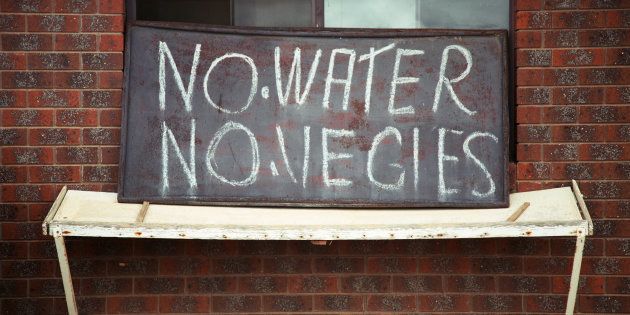
Do most South Africans realise that we are all living in a water-scarce country? Or is this one of those inconvenient truths that we choose to overlook in our daily lives, leaning more to comfort –- and longer showers?
As a Cape Town resident, it is not news that we have serious water restrictions. Some may forget or forgo the warnings, but they are firmly in place for the long haul –- and for our benefit in the long run! And while many people think it doesn't apply to them if there are no restrictions, I'd like to challenge that mindset.
Cape Town was placed on Level 3 water restrictions in November 2016. By January 2017, this was increased to the unprecedented Level 3B. Due to the ongoing, and unabating, drought crisis this level was increased in June to a never-before Level 4. At Level 4, each citizen was told to use less than 100 litres a day.
Then, a month later, this was up to Level 4B. And with Level 4B, so the daily water usage went down to 87 litres. Apparently, the average consumption of Americans is around 300 to 375 litres a day. So what does 87 litres per person a day look like? Well, if you take a five-minute shower, you are almost at your quota. A five-minute shower uses 80 litres. And, most recently, Level 5 water restrictions has been implemented in Cape Town.
Combine your shower with the two litres of water you should be drinking per day, plus about five litres for cooking and washing basic dishes -– and you're at your daily limit! Of course, that is without counting any flushes of the toilet [at home or at work], because for this you will need to be using your shower water caught in buckets to ensure no extra litres are lost down the loo.
My simplest shower saving tips are to switch off between lathering.
This is also not considering your weekly washing of clothes. Did you know that a washing machine can use up to 150 litres? So, if you divide that by seven days, we should account for 20 litres a day -– if we do washing once a week. By dividing the number of cycles, and litres per cycle, by the number of people in your household, you can also use the eco mode with the shortest washing time, and opt for a cold wash. It's more environmentally friendly!
So, a five-minute shower is not going to keep you under the limit. Instead, I opt for a "30 litres" two-minute shower, or less! My simplest shower saving tips are to switch off between lathering. Yes, it is chilly on winter mornings -– but it's also a moment for me to centre myself when the tap is off, to appreciate what I do have.
For us long-haired humans, we can cut down on one hair rinse by switching to a leave-in conditioner or using a dry shampoo to skip the hair wash entirely!
On top of my daily 30 litres or less for showering, I can then use our washing machine once or twice a week too, plus the odd flushing of the loo. I also use shower-collected water for mopping the kitchen and bathroom floors.
So if we say a maximum of 30 litres a day towards your weekly washing cycle total, plus 30 a day for showering and that leaves you with 27 towards drinking and cooking and the occasional "public flush". So that is 18 litres for two out-of-home loo visits, plus the remaining nine to cover your daily drinking two litres and seven for cooking, dish washing, hand washing and brushing of teeth!
That's no baths, no running water to rinse dishes, no kids playing with running hose pipes, and definitely no washing of cars, dogs or watering of gardens.
Home flushing is out, of course! But at home, there is absolutely no need to be flushing away perfectly good drinking water when a nine-litre bucket will quite powerfully, and satisfyingly, flush away all that is in your loo -– number one and number two!
In my twenties I was watching my weight by counting calories of the food I ate, now I add up the water in my activities each day! Perhaps you count your daily water litres too? Do you?
Of course, we all need to use as little water as possible –- whether in the Western or Northern Cape, Gauteng, KwaZulu-Natal or beyond. We must count our litres now and reduce our water use so that we have more in the summer months –- and years ahead. Will you join me in the daily challenge of staying well below the 87-litre mark?
That's no baths, no running water to rinse dishes, no kids playing with running hose pipes, and definitely no washing of cars, dogs or watering of gardens. It sounds limiting, but in fact, it is easier when it becomes a habit.
Ke nako. The time to act is now. Are you game?
